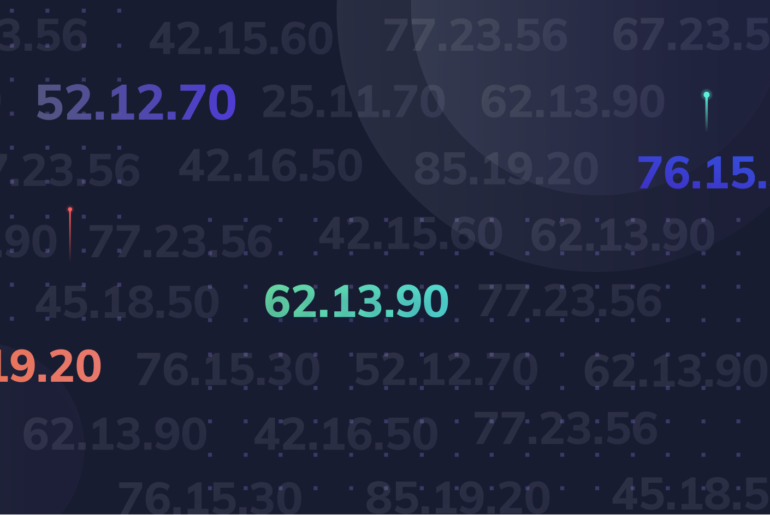Table of Contents
What is HSN Code?
HSN code stands for “Harmonized System of Nomenclature,” a eight-digit code used to systematically name and classify goods for taxation and trade. It was developed by the World Customs Organization (WCO) and serves as the global standard for categorizing over 5,000 products, playing a vital role in international trade and tax regulation.
Read About: HSN Code List for GST Goods
How does HSN Work?
Under the GST regime, the Harmonized System of Nomenclature (HSN) code serves as a unique identifier for over 5,000 commodity groups, efficiently categorizing goods in a systematic manner.
For example, the HSN code for cast iron pipes is 7303.0010. This code can be broken down as follows:
- The first two digits, 73, indicate the chapter for articles of iron and steel.
- The next two digits, 03, specify the heading for pipes and tubes.
- The final four digits, 0010, further refine the classification to a specific type of cast iron pipes.
This structured approach ensures precise classification of products under GST, facilitating seamless taxation processes.
The Importance of the HSN Code
Systematic Identification
The HSN code provides a structured way to identify and group goods based on characteristics such as material, function, origin, etc. This aids in the smooth collection and analysis of trade statistics.
Uniform Classification
It ensures uniform classification of goods across different countries, minimizing disputes and errors in trade transactions.
Customizable for Countries
The HSN code is adaptable to each country’s specific needs, allowing countries to add more digits to the standard six-digit code to create further subcategories of goods.
Adoption in India
Initially, India adopted the six-digit HSN code, but it was later expanded to eight digits for more precise classification, especially with the implementation of the GST regime.
Requirement for GST
Under the GST system, taxpayers are required to mention the HSN code in their invoices and returns for proper classification of goods and for certain GST exemptions.
Exemptions for Small Taxpayers
Small taxpayers with an annual turnover below Rs. 1.5 crore are exempt from mentioning the HSN code in their invoices and returns.
HSN Code Based on Turnover
- Taxpayers with a turnover between Rs. 1.5 crore and Rs. 5 crore must mention a two-digit HSN code.
- Taxpayers with a turnover exceeding Rs. 5 crore must mention a four-digit HSN code.
Understanding how the HSN Code is used in India
India has been a member of the World Customs Organization (WCO) since 1971 and has utilized 6-digit HSN codes for classifying goods in Customs and Central Excise since 1986. Over time, 2 additional digits were added for better differentiation.
HSN Code System Under GST
With the introduction of GST, HSN codes are implemented through a 3-tiered system:
- Turnover under ₹1.5 crore: No requirement to use HSN codes.
- Turnover between ₹1.5 crore and ₹5 crore: Mandatory use of 2-digit HSN codes.
- Turnover over ₹5 crore: Requirement to use 4-digit HSN codes.
- Importers and exporters: Must use 8-digit HSN codes.
Global Standardization
HSN codes play a crucial role in standardizing GST rates globally. The system consists of 21 sections, encompassing 99 chapters, 1,244 headings, and 5,224 subheadings. Each section is divided into chapters, which further break down into headings and subheadings. The sections and chapters provide a general description of the product, while headings and subheadings offer detailed specifications.
Example Breakdown of HSN Code
For example, consider the HSN code 62.13.90:
- The first two digits (62) indicate apparel or clothing (excluding knitted or crocheted items).
- The next two digits (13) refer to handkerchiefs.
- The final two digits (90) specify that these handkerchiefs are made from other textiles or materials.
Further Differentiation
In India, further differentiation is possible. If the handkerchiefs are made from man-made textiles, the complete code would be 62.13.90.10, where 10 denotes man-made materials. Conversely, if they are made from silk or silk waste, the code would be 62.13.90.90, with 90 indicating silk or silk waste.
How to avoid mistakes with HSN in GST?
Avoiding mistakes with HSN and SAC information while filing GST is crucial for ensuring compliance. Here are some effective strategies:
Use Smart Payment Dashboards
Leverage platforms like Razorpay, which offer intuitive dashboards to help you manage both HSN and SAC codes efficiently during your GST filings.
Automated GST-Compliant Invoices
One of the significant benefits of Razorpay is the ability to automatically generate GST-compliant invoices for every transaction or for multiple transactions at once. This feature minimizes errors and saves time.
Save Invoice Templates
To simplify the invoicing process further, save templates for your invoices or line items. This way, you won’t need to enter the same information repeatedly, reducing the chances of mistakes.
Easy Sharing and Downloading
Razorpay’s platform allows for easy sharing and downloading of invoices, ensuring you have all your documentation ready for compliance checks.
Stay Informed on Tax Rates
Regularly check the applicable GST rates for your goods and services, including those tied to SAC codes. Utilize Razorpay’s free GST calculator to get both GST-inclusive and exclusive prices, helping you avoid miscalculations.
What is SAC Code?
SAC stands for Service Accounting Code, a unique six-digit code used to classify services under the GST regime in India. SAC codes, issued by CBIC, help in identifying and categorizing services for tax calculation, with the first two digits (99) representing the service category, followed by specific details of the service.
How Does SAC Work?
Under the GST regime, the Service Accounting Code (SAC) functions as a unique identifier for various services, facilitating their classification and taxation. Each SAC is a six-digit code that systematically categorizes services, ensuring clarity and consistency in tax reporting.
For example, SAC code 997212 covers rental or leasing services involving owned or leased non-residential property. Breaking it down:
The initial “99” refers to services.
The “72” represents the primary category, which is leasing or rental services.
The “12” specifies the service as rental of non-residential property.
This structured framework not only aids in the accurate classification of services for tax purposes but also helps businesses comply with GST regulations effectively.
The Importance of the SAC Code
Systematic Identification
The HSN code provides a structured way to identify and group goods based on characteristics such as material, function, origin, etc. This aids in the smooth collection and analysis of trade statistics.
Uniform Classification
It ensures uniform classification of goods across different countries, minimizing disputes and errors in trade transactions.
Customizable for Countries
The HSN code is adaptable to each country’s specific needs, allowing countries to add more digits to the standard six-digit code to create further subcategories of goods.
Adoption in India
Initially, India adopted the six-digit HSN code, but it was later expanded to eight digits for more precise classification, especially with the implementation of the GST regime.
Requirement for GST
Under the GST system, taxpayers are required to mention the HSN code in their invoices and returns for proper classification of goods and for certain GST exemptions.
Exemptions for Small Taxpayers
Small taxpayers with an annual turnover below Rs. 1.5 crore are exempt from mentioning the HSN code in their invoices and returns.
Differences Between the HSN Code and SAC Code
SAC and HSN codes are two systems of classification used for goods and services under the GST regime in India or the GST State Code List. They both identify the nature and value of the taxable items and ensure uniformity across the country.
Feature |
HSN Code |
SAC Code |
| Full Form | Harmonized System of Nomenclature | Service Accounting Code |
| Length | Typically 8 digits | 6 digits |
| Purpose | Classifies goods | Classifies services |
| Structure | 2 digits for chapter, 2 for heading, 2 for product, 2 for sub-product | 2 digits for major service, 2 for specific service, 2 for sub-service |
| Example | Rice: 1006 | Restaurant Services: 9963 |
| Related Codes | Used for goods like electronics, clothing, etc. | Used for services like banking, restaurants, etc. |
Where Should I Mention the HSN/SAC Code?
If you’re registered under GST, mentioning the correct HSN (for goods) or SAC (for services) code isn’t optional — it’s absolutely essential. Here’s where and why you need to mention these codes:
During GST Registration:
When you’re signing up for GST, you need to disclose what kind of products or services your business deals with. At this stage, specifying the correct HSN or SAC code helps the government know exactly what you’re offering.
For Determining GST Rates:
Each HSN or SAC code is linked to a specific GST rate. So if you want to apply the right tax rate, you need to know the correct code. This saves you from undercharging or overcharging tax.
While Creating GST Invoices:
If you’re issuing a GST invoice, including the right HSN/SAC code is a must. It ensures clarity in what’s being sold or serviced and helps avoid any confusion later with buyers or the tax authorities.
While Filing GST Returns:
Every GST return includes a summary of goods and services sold. These are reported category-wise using HSN/SAC codes. Including these codes ensures transparency and smooth return processing.
So whether you’re registering, invoicing, or filing returns — HSN and SAC codes are part of every step. Using the correct code ensures your GST filings are compliant and error-free.
Conclusion
Before starting the GST registration process, it’s crucial to understand the importance of HSN and SAC codes. These codes provide a uniform and systematic classification of goods and services, facilitating accurate GST rate determination and tax revenue collection. Proper classification ensures compliance, transparency, and accountability. Additionally, HSN codes play a vital role in international trade, supporting India’s integration into the global market and harmonizing customs procedures.
Frequently Asked Questions
1. What is the HSN code in India?
HSN stands for Harmonized System of Nomenclature and is used to classify goods in a systematic manner.
2. Who is Liable for the 6-Digit HSN Code?
Businesses with a turnover exceeding Rs. 1.5 crore are required to use a 6-digit HSN code for their goods under GST. Those with a lower turnover are not mandated to use HSN codes, but can choose to do so for clarity. Importers and exporters must always use HSN codes.
3. Is HSN Code 6-Digit or 8-Digit?
India initially used 6-digit HSN codes for classifying Customs and Central Excise commodities. However, to enhance precision, the code was expanded to 8 digits. As a member of the World Customs Organization (WCO) since 1971, India now uses the 8-digit HSN code for more detailed classification under the GST regime.
4. What is HSN code used for?
HSN codes are used to classify the commodities into various sections, chapters, headings, and sub-headings for convenience.
5. Is HSN code mandatory in GST invoices?
Yes, under GST invoice rules and formats, suppliers are required to mandatorily display the HSN code or SAC code of the goods or services supplied with an invoice.
6. What does HSN/SAC codes stand for?
HSN (Harmonized System of Nomenclature) codes classify goods under GST, while SAC (Services Accounting Code) is used for categorizing services for taxation purposes.
7. Who is eligible for the HSN code in GST?
According to the GST rules, every taxpayer with a turnover of over Rs. 5 crores in the previous financial year must mention the 6-digit HSN code for goods and services on their invoices and GSTR-1 returns.
8. Is a GST bill valid without an HSN code?
No, they are invalid. The reason is HSN is a mandatory requirement for claiming input tax credits and ensuring compliance.
9. Are HSN codes the same across all countries?
Yes, they are identical in all the countries that are under the World Customs Organisation (WCO), which is over 200 countries and economies. They use 6-digit HSN codes to classify goods. However, some countries use 8-digit codes to further sub-classify products or goods.


